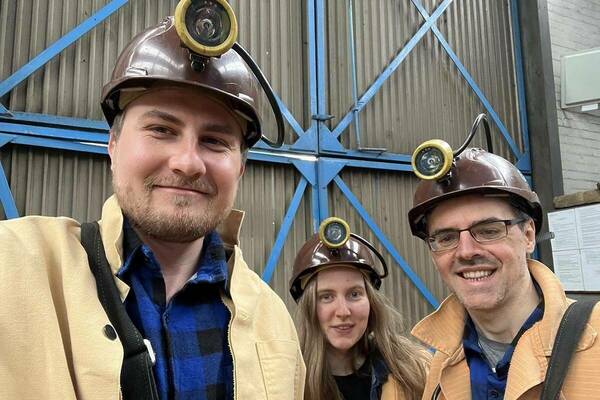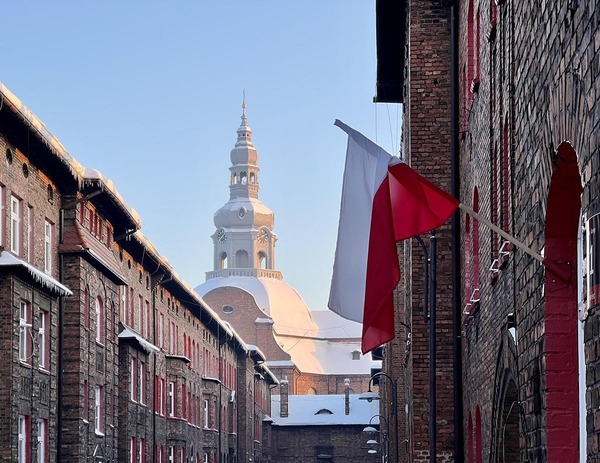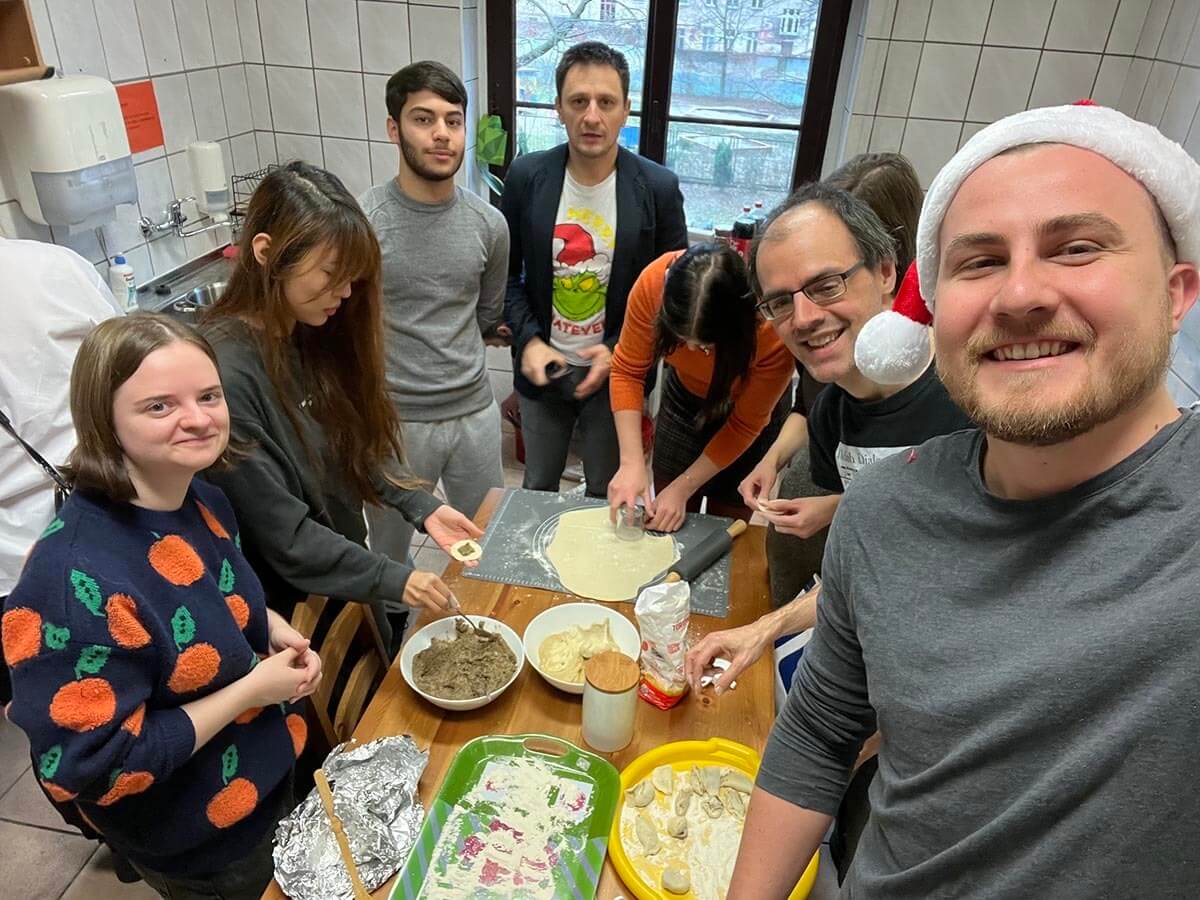A year in Poland prepares Ph.D. student for research into Polish American history back home

For eight months, Gavin Moulton, a Ph.D. student in the Department of History, studied Polish at the University of Wroclaw in support of his dissertation research on Slavic culture in the Rust Belt.
If you have spent any amount of time on the internet, you have probably unintentionally learned a few words in Polish (bóbr, pingwin, or ślimak, anyone?), but you might not know that Polish is one of the hardest Slavic languages for English speakers to learn. After spending 800 hours in intensive Polish classes at the University of Wroclaw, I can confirm that gaining proficiency in Polish is no easy task. For starters, there are seven cases and three genders, as well as separate grammatical concepts for children, non-animate objects that are alive, and flat places. As one of the oldest Slavic languages, Polish reflects many archaic grammatical concepts and exceptions that have been modernized in other languages for a long time.

But if you are a Ph.D. student intent on studying how Polish migrants shaped a cultural region in what we know today as the Rust Belt, learning the language is the only option. During the Second Wave of migration to the United States from 1880-1920, Poles formed the largest group of Slavic migrants. Fleeing cultural oppression in the homeland (until 1918 partitioned between Germany, Austria, and Russia), and seeking economic opportunities in the United States over 1 million ethnic Poles migrated, settling primarily in the industrial regions of the Northeast and Midwest. The overwhelmingly working-class identity of the new migration, employment in mines and steel mills, and strong religious communal identity shaped an industrial-religious identity that gave a distinct character to Polish American urban geography. Indeed, you can often identify a Polish church or neighborhood by its proximity to a steel mill or other heavy industry.
Learning Polish has prepared me for dissertation research on this influential part of American history. As Poles experienced discrimination from both American society and the Roman Catholic Church, the diaspora joined together to build new autonomous institutions. Its members continued to write, read, and speak in Polish through several generations. This means that the most important sources for understanding this history are found in Polish until the 1960s.
Studying abroad brings new research tools back home
When I return to the United States, I will begin several months of archival research in the Rust Belt, traveling to Polish churches to document industrial-religious art and consult parish, diocesan, and union archives to better understand this cultural region.
While studying in Poland, I frequently traveled to the industrial region of Upper Silesia to see how the Polish counterpart compares to the American region that I study. The city of Katowice is known as Poland’s Pittsburgh for its many coal mines and steel industry. Historically, Katowice was part of Germany and joined the new Polish state during the interwar period. Dangerous conditions in the mines and contested border identity created parallel conditions to those experienced by migrants in the United States and produced a similarly distinct religious visual culture blending the industrial and sacred. By traveling to Silesia and corresponding with professors in Polish, I can now integrate a comparative international perspective into my research.
Support from the Nanovic Institute and Graduate School Professional Development Award enabled me to dedicate the better part of a year to language study and research abroad. As Ph.D. programs are increasingly compressed and language programs face funding cuts, I feel especially grateful for Notre Dame’s continued investment in its students and fostering of an international community. Polish historical sources in the United States capture a valuable outlook on mass unionization, company towns, and the history of capitalism and more broadly foreign language sources challenge simplistic narratives of American history by providing a richer understanding of how class, nationality, and race have shaped and continue to inform our contemporary society.

Originally published by at nanovic.nd.edu on September 04, 2024.
Latest Research
- ‘A special challenge’: German studies scholar wins National Humanities Center fellowship for research on medieval womenFor CJ Jones, the joy of research is not the answers but the journey. And the next step on that journey is a fellowship with the National Humanities Center. …
- Notre Dame Lead Innovation Team partners with local WIC program to identify, prevent lead poisoning in childrenB.A.B.E. store “shoppers” now have something new to help their families: free lead screening kits offered by the University of Notre Dame’s Lead Innovation Team.
- Notre Dame Welcomes Ninth Cohort of Warrior-Scholars for Transformative Academic JourneyNOTRE DAME, IN – The University of Notre Dame recently concluded its ninth successful Warrior-Scholar Project (WSP) boot camp, hosting 34 dedicated Warrior-Scholars from June 21st to 28th. This intensive, week-long academic residency provided transitioning service members and veterans…
- Entrepreneurship and Empowerment in South Africa study abroad program celebrates 25 yearsThis year, the Entrepreneurship and Empowerment in South Africa (EESA) program marked its 25th year of operation. EESA is a six-week summer study abroad program that enables students to help historically…
- Vatican honors Martin and Carmel Naughton with papal awardCarmel…
- Brain tumor growth patterns may help inform patient care managementAssistant Professor Meenal Datta (University of Notre Dame/Wes Evard) A team of researchers from the University of Notre Dame, Harvard Medical School/Massachusetts General Hospital, and Boston University has developed a technique for measuring a brain tumor’s mechanical force and a new model to estimate how much brain tissue a patient has lost.













